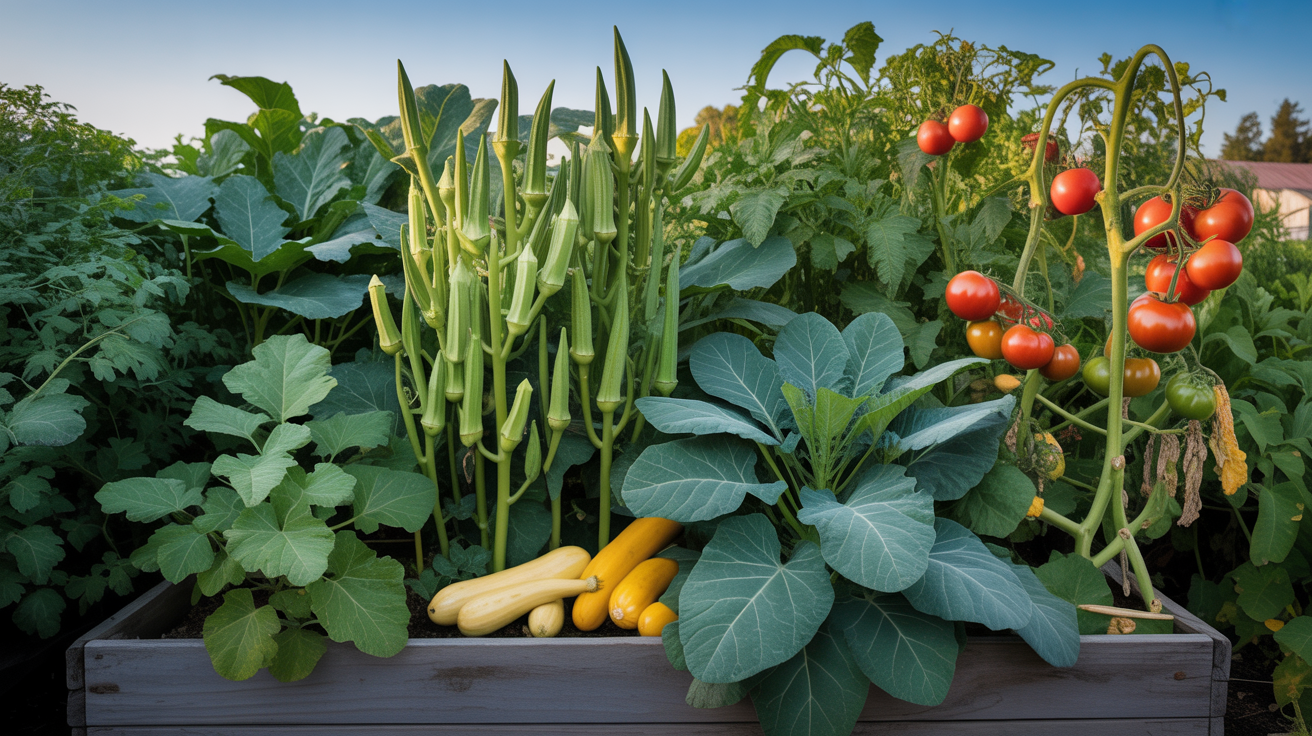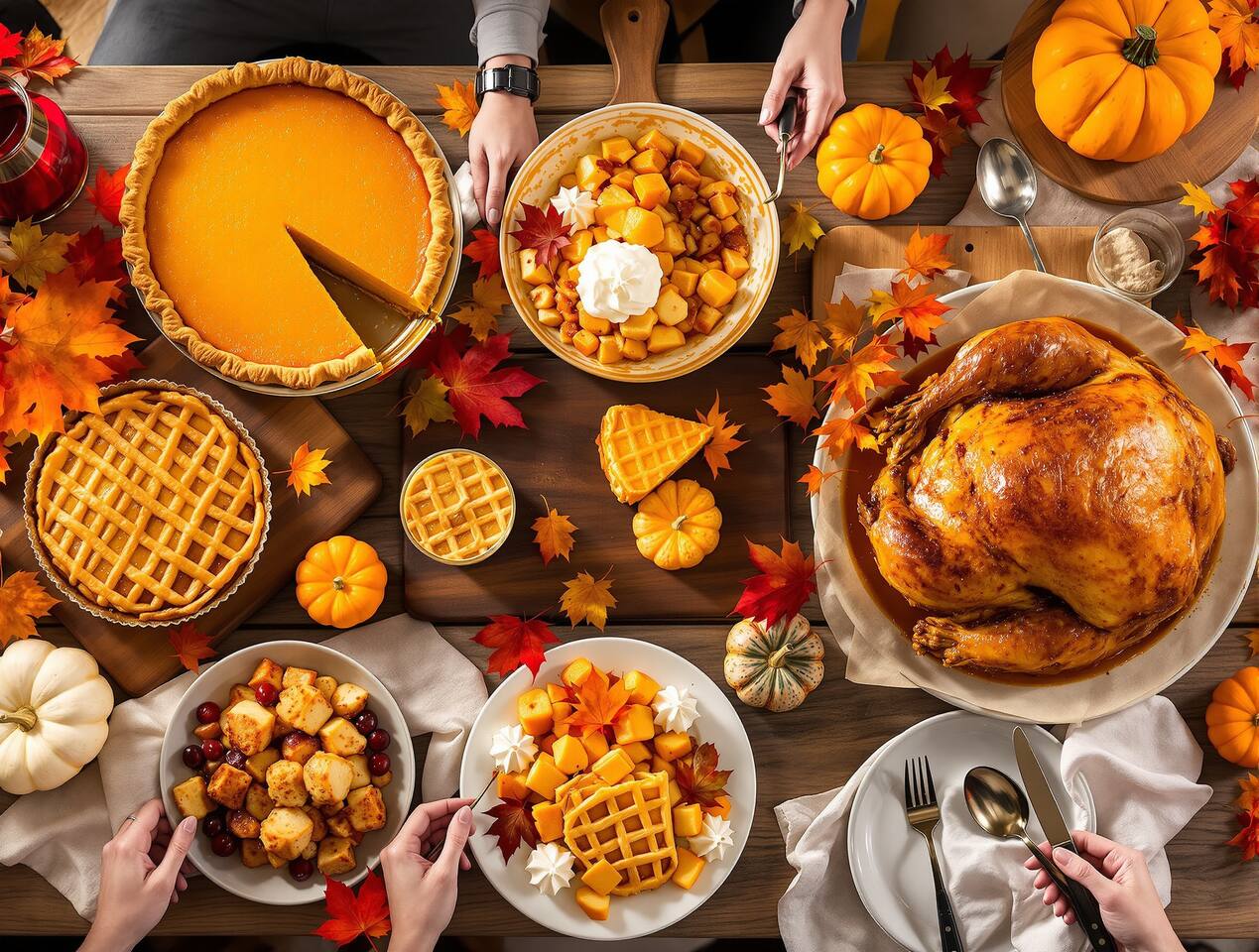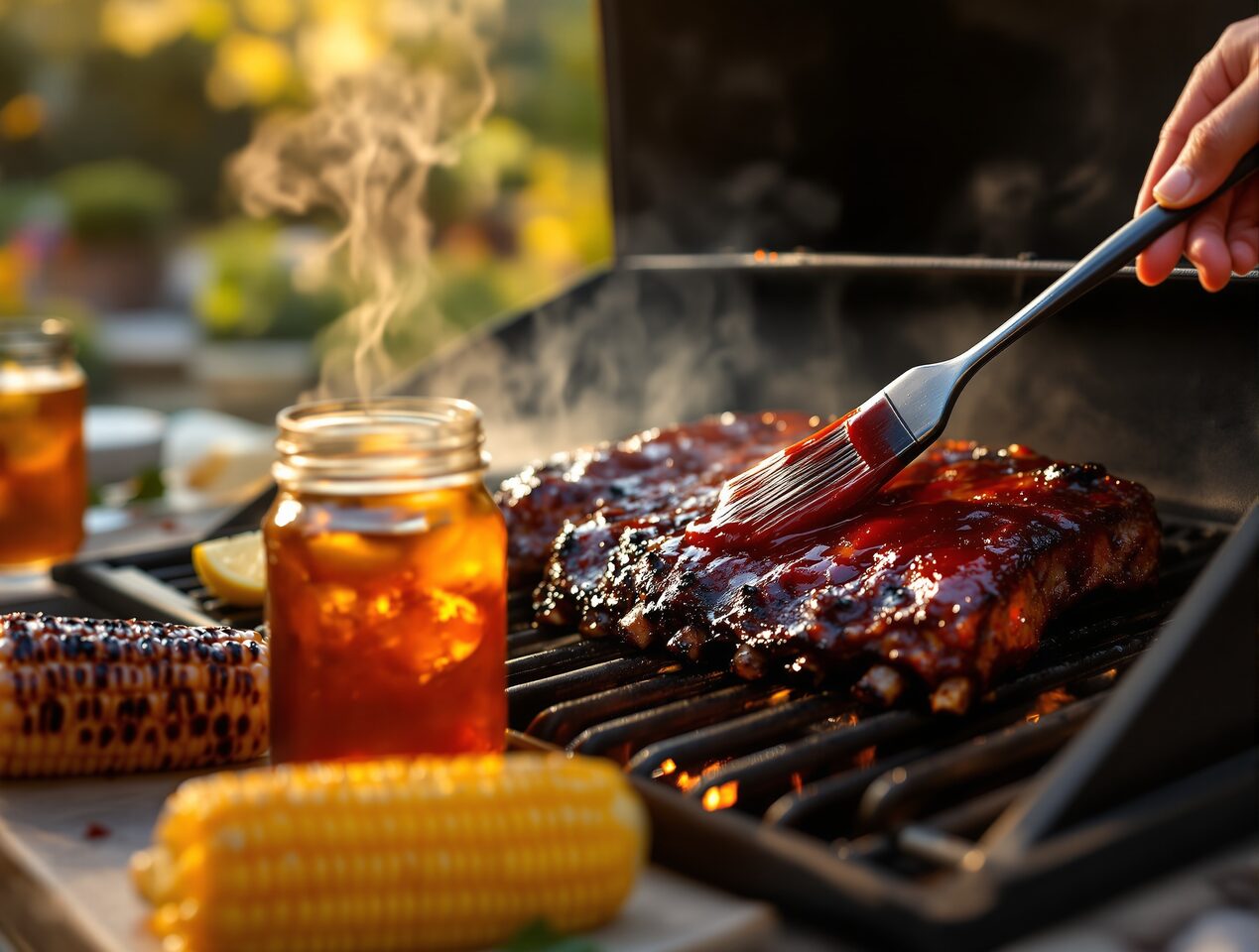Learn how to grow authentic Southern vegetables like okra, collard greens, and squash with tips for thriving in hot, humid Southern climates.
Share This Recipe
There's something profoundly satisfying about growing the vegetables that grace traditional Southern tables. From towering okra plants to lush collard greens, a Southern vegetable garden connects you directly to the region's culinary heritage while providing the freshest ingredients imaginable.
Why Southern Vegetables Thrive Here
Southern vegetables evolved to handle conditions that challenge many crops: intense heat, high humidity, and long growing seasons. These heat-loving plants don't just tolerate Southern summers—they thrive in them, producing abundantly when properly cared for.
This makes Southern gardening uniquely rewarding. While Northern gardeners envy our long seasons, we have the perfect climate for vegetables that define regional cooking: okra, collards, sweet potatoes, field peas, and summer squash.
Essential Southern Vegetables
Let's explore the must-grow vegetables for any Southern garden:
Okra: The Southern Staple
Okra is perhaps the most quintessentially Southern vegetable, essential for gumbo, frying, and pickling.
Planting:
Care:
Tips: Wear long sleeves when harvesting—okra plants can be prickly. Cut pods with pruning shears rather than pulling. The more you harvest, the more the plant produces.
Collard Greens: Year-Round Nutrition
Collards are incredibly productive and tolerant, growing through both Southern summers and mild winters.
Planting:
Care:
Tips: Harvest outer leaves while letting the plant continue growing. Collards taste sweeter after a light frost. For best flavor, harvest in the morning and refrigerate immediately.
Tomatoes: Southern Gold
While tomatoes grow nationwide, Southern varieties handle heat and humidity better.
Planting:
Care:
Tips: In hottest regions, consider shade cloth during peak summer. Plant both early and late crops to avoid the worst heat.
Field Peas and Southern Peas
Black-eyed peas, crowder peas, and purple hull peas are Southern garden staples that fix nitrogen while producing abundant harvests.
Planting:
Care:
Tips: Leave some plants to dry on the vine for dried peas. The dried peas store for months and are perfect for winter soups.
Summer Squash: The Prolific Producer
Yellow squash and zucchini produce abundantly in Southern gardens, sometimes too abundantly!
Planting:
Care:
Tips: Hand-pollinate if bees are scarce. Male flowers appear first, followed by females (with tiny squash at base). Use a male flower to pollinate females in the morning.
Sweet Potatoes: The Underground Treasure
Sweet potatoes are remarkably easy to grow and store beautifully for months.
Planting:
Care:
Tips: Harvest before first frost. Cure harvested sweet potatoes at 85°F with high humidity for 7-10 days before storing. Properly cured sweet potatoes store for months.
Planting Calendar for the Deep South
Early Spring (Feb-March):
Spring (March-April):
Late Spring (May):
Summer (June-July):
Late Summer (Aug):
Fall (Sept-Oct):
Soil Preparation: The Southern Challenge
Southern soils tend toward clay and acidity, requiring amendment for optimal vegetable production.
Improving clay soil:
Managing soil pH:
Building organic matter:
Watering Strategies
Southern heat demands thoughtful irrigation:
Deep, infrequent watering beats frequent shallow watering:
Mulching is essential:
Know your plants' needs:
Pest and Disease Management
Southern gardens face unique challenges:
Common pests:
Disease prevention:
Organic solutions:
Extending the Season
Spring protection:
Summer strategies:
Fall gardening:
Container Gardening for Limited Space
No yard? No problem. Many Southern vegetables thrive in containers:
Best container vegetables:
Container requirements:
Harvesting and Storage
Harvest timing matters:
Storage basics:
Connecting to Southern Heritage
Growing traditional Southern vegetables connects you to generations of gardeners who fed their families from backyard plots and small farms. These vegetables tell the story of resourcefulness, regional adaptation, and culinary tradition.
When you harvest okra your great-grandmother would have grown, or when collards you planted in September grace your New Year's table, you're participating in living history. This is Southern food culture at its most authentic and rewarding.
Getting Started This Season
Don't feel overwhelmed by trying to grow everything at once. Start with three vegetables that excite you. Master those, then expand your garden next season.
A simple starting garden might include:
This modest garden will produce abundantly while teaching you the rhythms of Southern vegetable gardening.
What vegetables are essential in your Southern garden? Share your growing tips and favorite varieties in the comments!
*Want to put your homegrown vegetables to delicious use? Try our Classic Southern Collard Greens recipe—it's even better with greens fresh from your garden.*
Affiliate Disclosure: As an Amazon Associate, we earn from qualifying purchases.
Never Miss a Recipe!
Join 10,000+ Southern food lovers getting our weekly newsletter with new recipes, cooking tips, and exclusive content delivered straight to your inbox.
Subscribe Now

